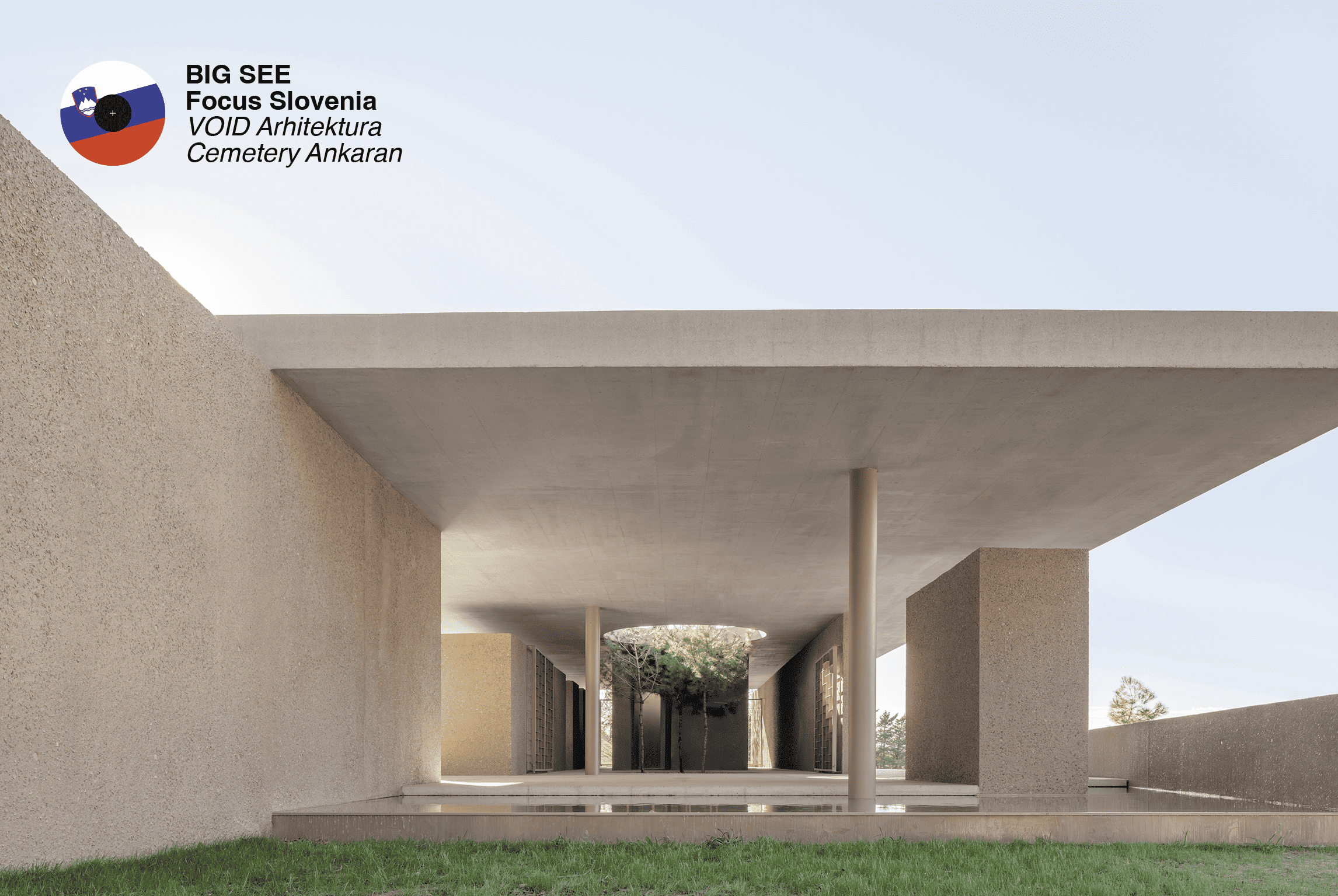3 Questions for the VOID Arhitektura Team
Cemeteries are sites containing the quiet presence of memories and the constancy of cultural rituals; this combination poignantly defines a sense of bodily transference through atmospheric quietude.
Q: By drawing from the tradition of Mediterranean walled cemeteries and sacred groves, what new dialogues between past and present do you aim to evoke?
Cemeteries are sites containing the quiet presence of memories and the constancy of cultural rituals; this combination poignantly defines a sense of bodily transference through atmospheric quietude. The Ankaran Cemetery embodies these qualities—their significance and their constancy—furthermore, the architecture of the cemetery is conceived as a liminal transition space between the verticalness of the adjacent forest and the limitlessness of the Adriatic horizon to the southwest.
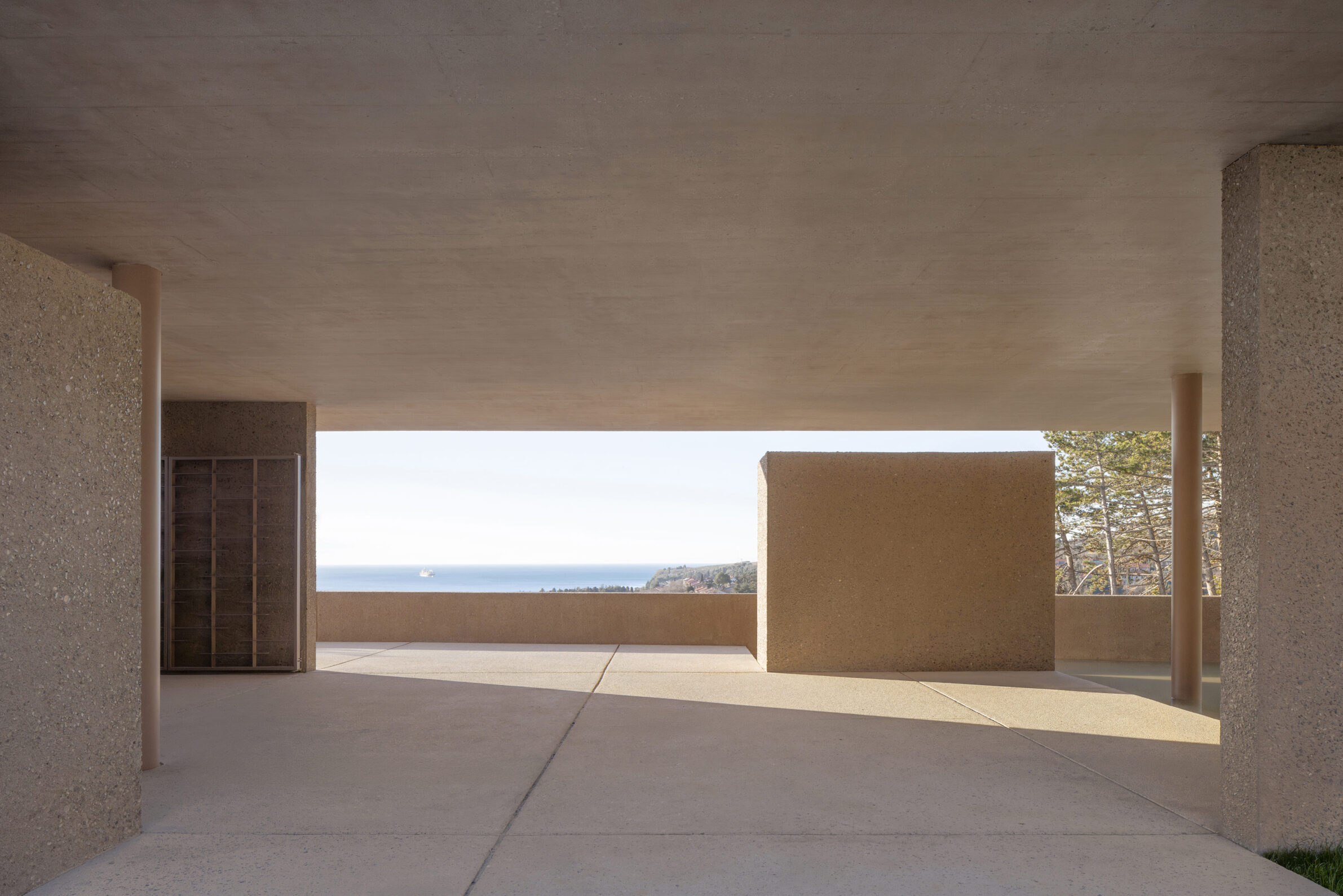
Q: How do material choices, such as concrete walls echoing flysch layers and karst stone accents, embed local identity and symbolic layers into the space?
The design of the burial fields is derived from the interpretation of traditional walled cemeteries found near Ankaran, Lovran, Bertoki and Stari Milje. All architectural elements materially derive from the colors and textures of the location. Amidst the massive washed concrete walls in the earthy color of the flysch layers, the polished concrete urn walls stand out, while the bright connecting path floats above the terrain. Individual accents and functional elements are made of local karst limestone, wood and metal.
All architectural elements materially derive from the colors and textures of the location.
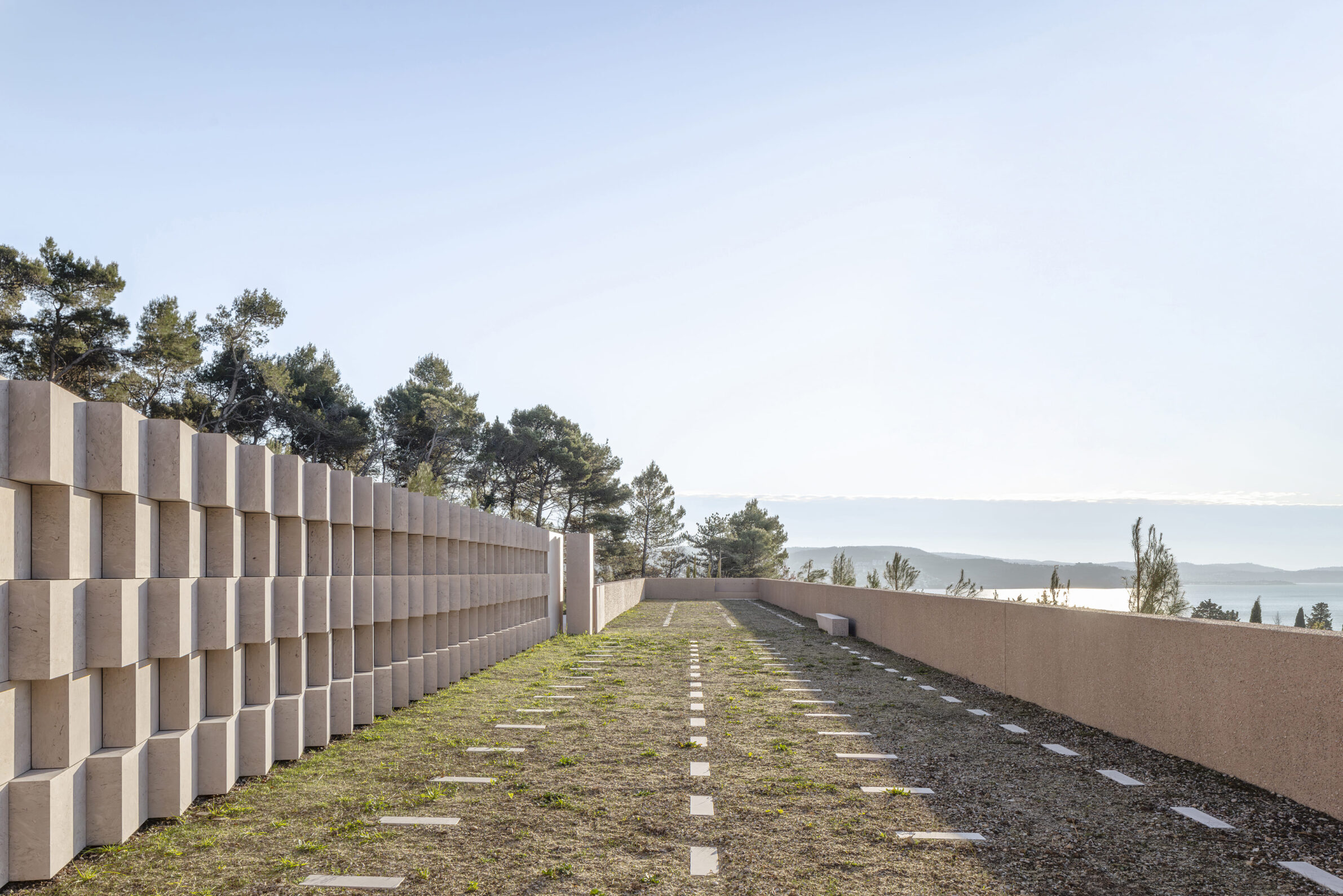
Q: What larger questions about community, equality in death, and the role of public landscapes in mourning does this project raise for you?
A: Ankaran did not have a suitable place to say goodbye its deceased, therefore, both functionally and symbolically, the new cemetery defines one of the main public spaces for the community. The forest cemetery shows its dual nature by design. On the one hand, it functions as a freely passable forest-park intended for walks and contemplation, and on the other, as a series of marked burial fields—smaller cemeteries—which are aligned in terraces on the slope above the farewell building. The Ankaran Cemetery, with its contemporary approach to the cemetery as part of a free passable forest park accessible to all, transforms the traditional idea of the cemetery space as a place of the remembrance into a metaphor for community.
The Ankaran Cemetery, with its contemporary approach to the cemetery as part of a free passable forest park accessible to all, transforms the traditional idea of the cemetery space as a place of the remembrance into a metaphor for community.
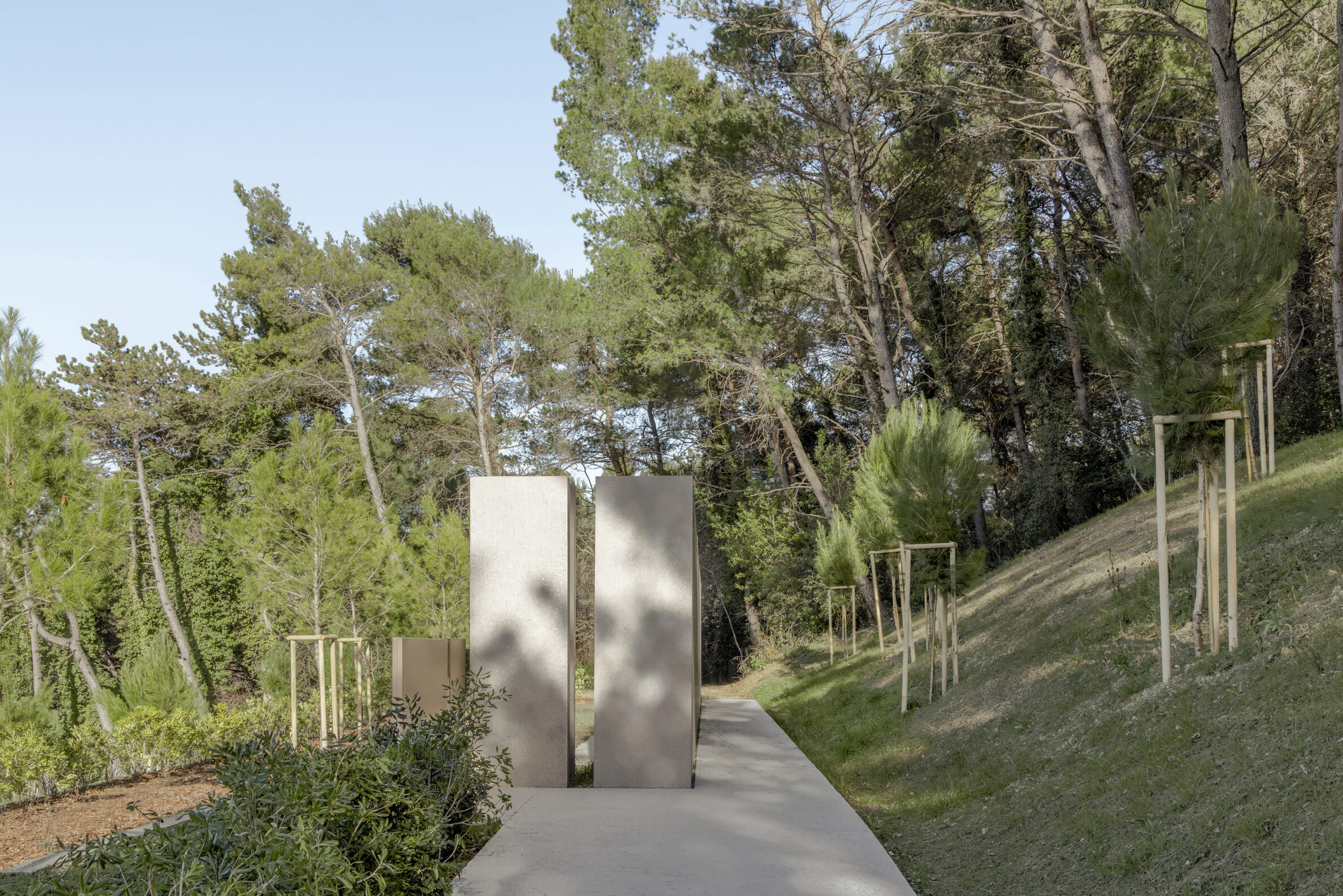
About Ankaran Cemetery
The place of remembrance at the transition between the verticals of the forest and the limitlessness of the horizon
Cemeteries are sites containing the quiet presence of memories and the constancy of cultural rituals; this combination poignantly defines a sense of bodily transference through atmospheric quietude. The Ankaran Cemetery embodies these qualities—their significance and their constancy—furthermore, the architecture of the cemetery is conceived as a liminal transition space between the verticalness of the adjacent forest and the limitlessness of the Adriatic horizon to the southwest. The space of the cemetery is defined by these contrasting relationships and transitions between open and closed, light and dark – between the here and the hereafter.
The forest cemetery shows its dual nature by design. On the one hand, it functions as a freely passable forest-park intended for walks and contemplation, and on the other, as a series of marked burial fields—smaller cemeteries—which are aligned in terraces on the slope above the farewell building. The well-conceived dramaturgy of architectural and landscape elements lined up along the serpentine ritual path directs the visitor’s gaze alternately along the terrain into the vertical forest and perpendicularly to the terrain towards the sea, into this unfathomable dimension that merges with the sky.
All architectural elements materially derive from the colors and textures of the location. Amidst the massive washed concrete walls in the earthy color of the flysch layers, the polished concrete urn walls stand out, while the bright connecting path floats above the terrain.
The Ankaran Cemetery, with its contemporary approach to the cemetery as part of a free passable forest park accessible to all, transforms the traditional idea of the cemetery space as a place of the remembrance into a metaphor for community.
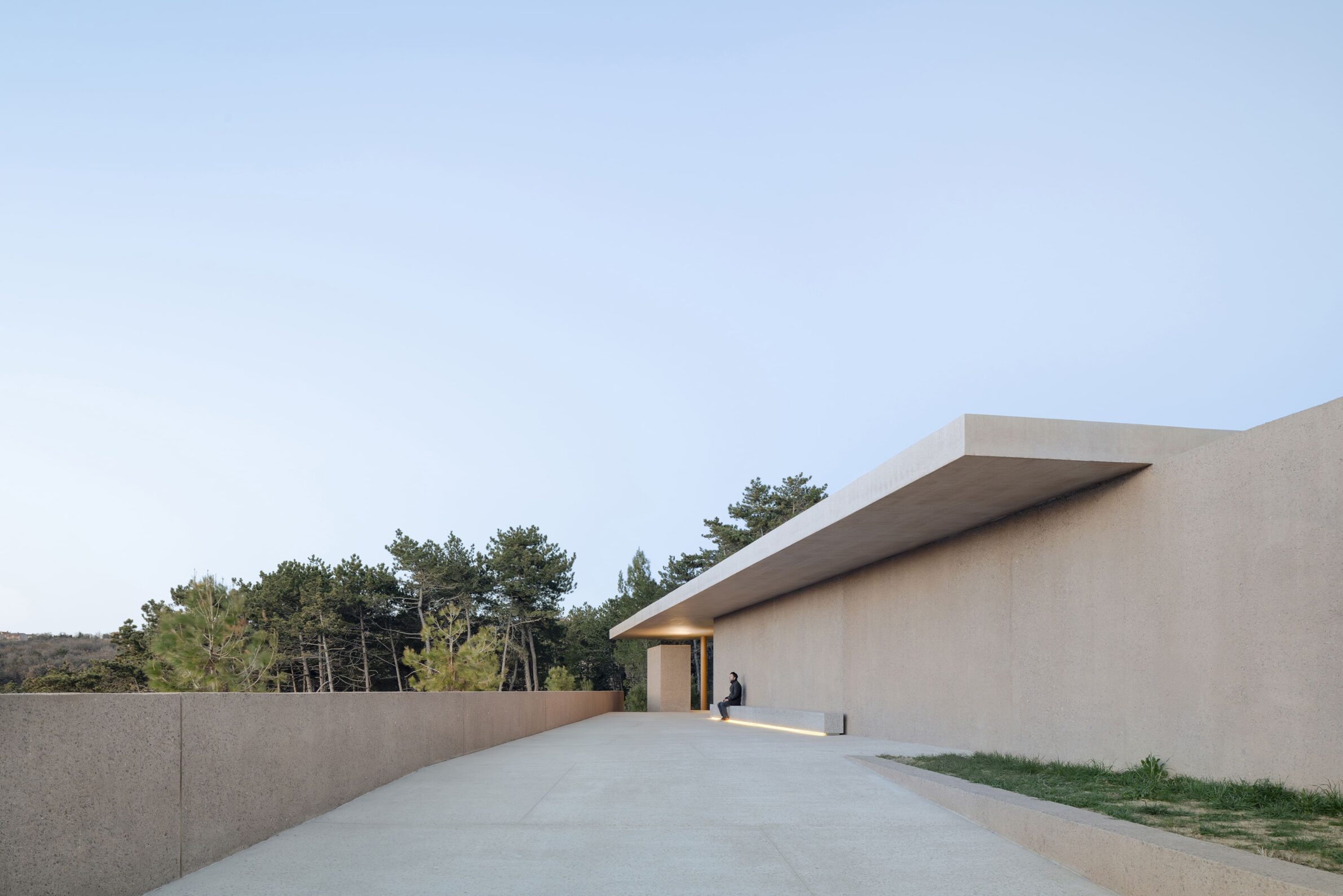
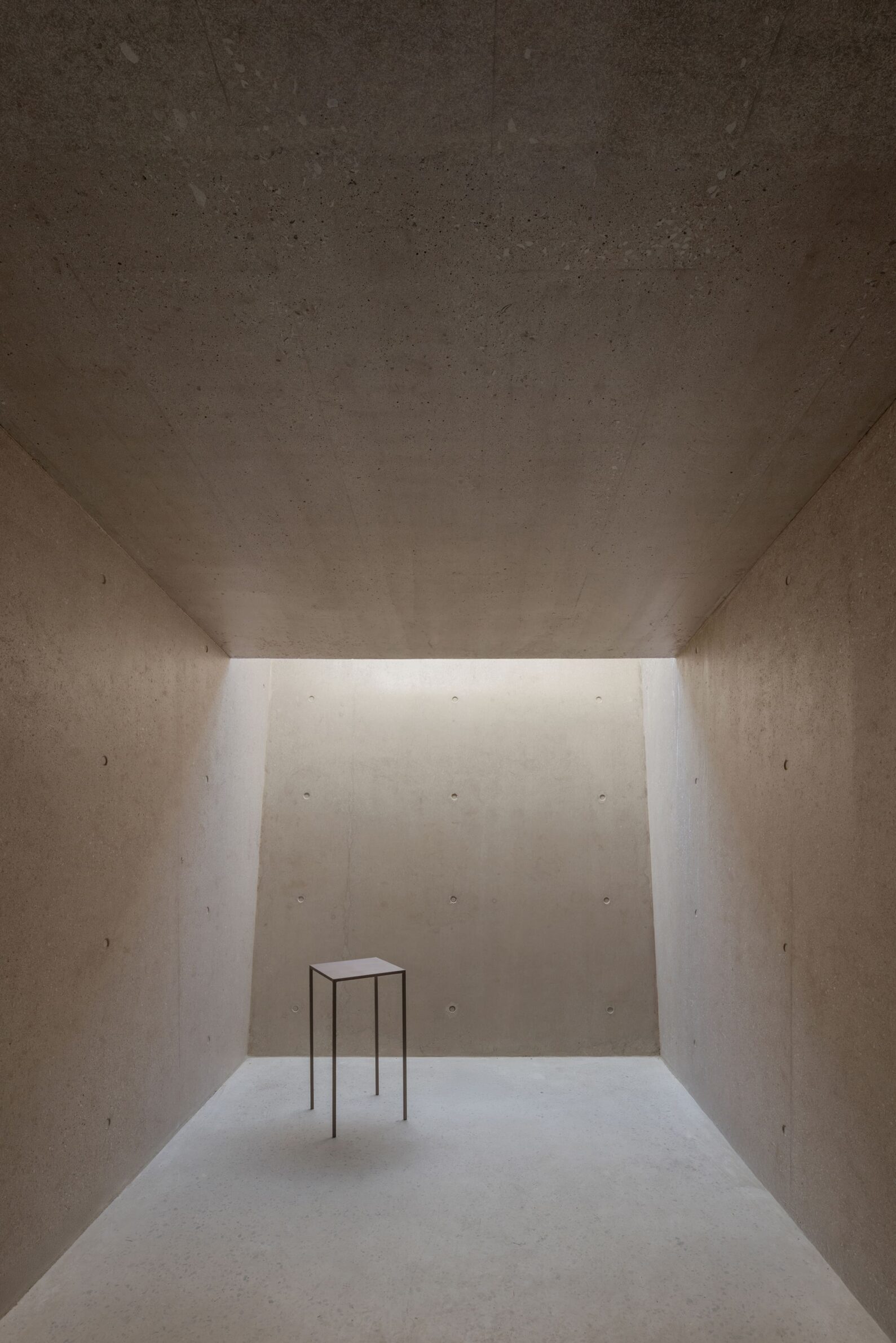
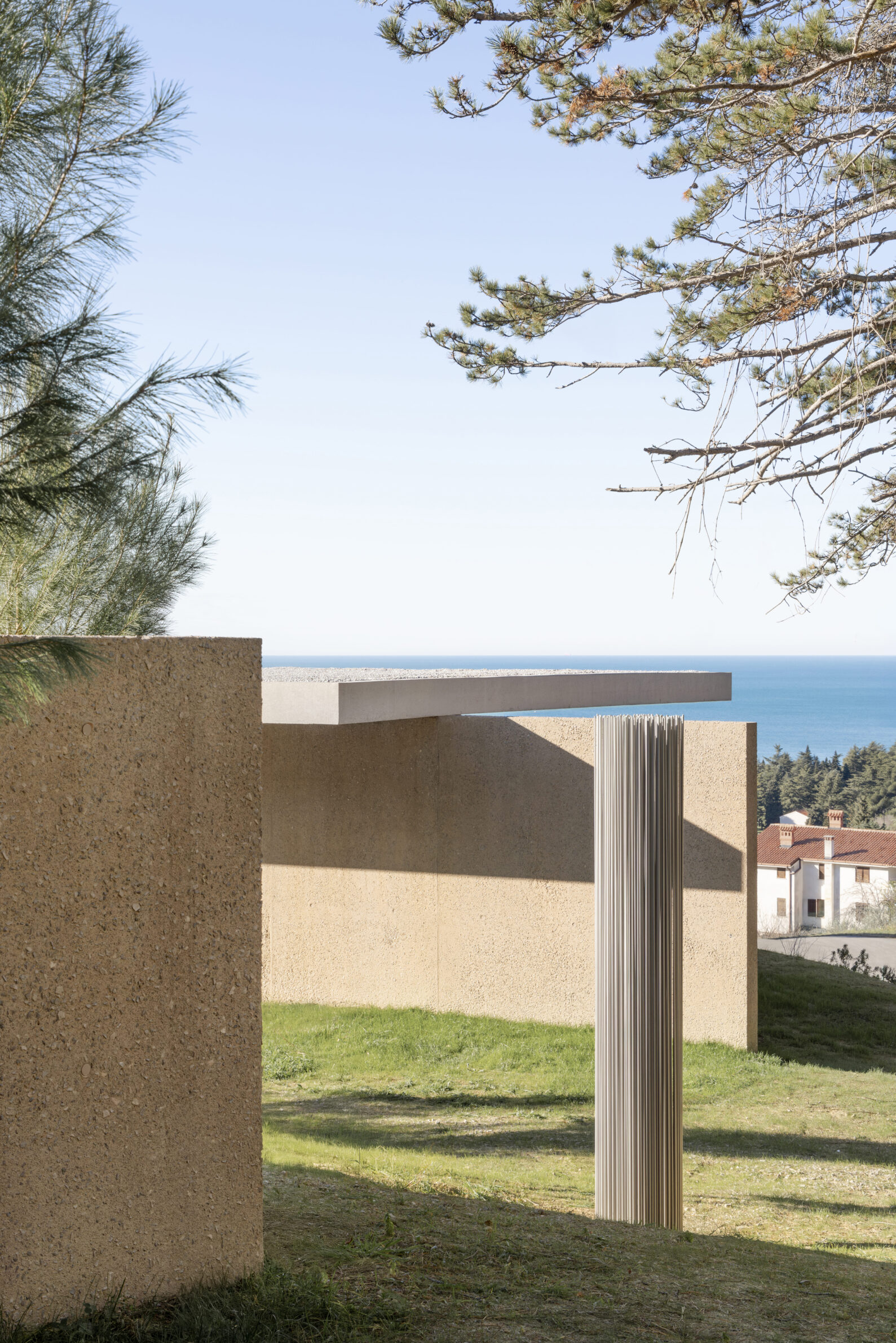
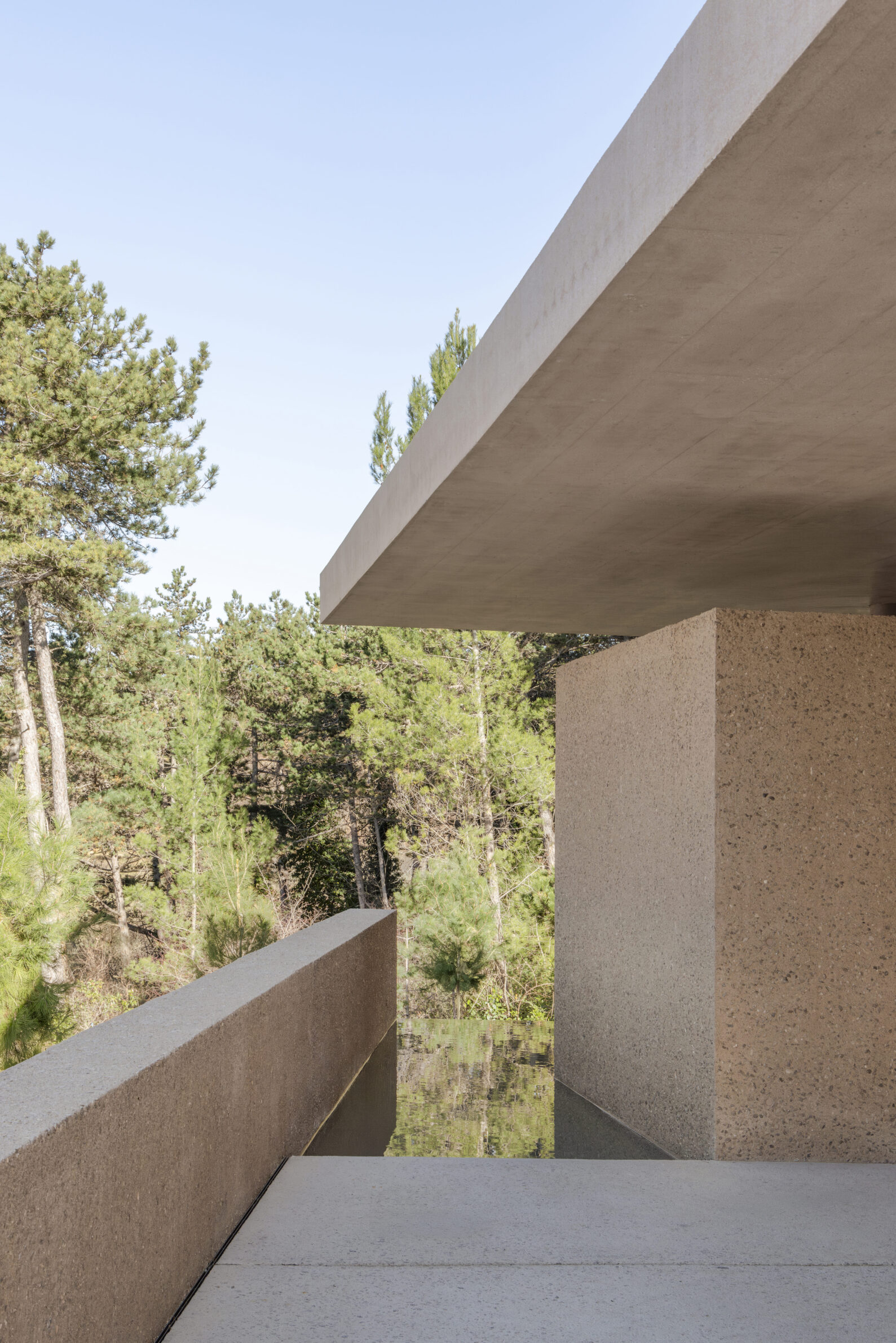
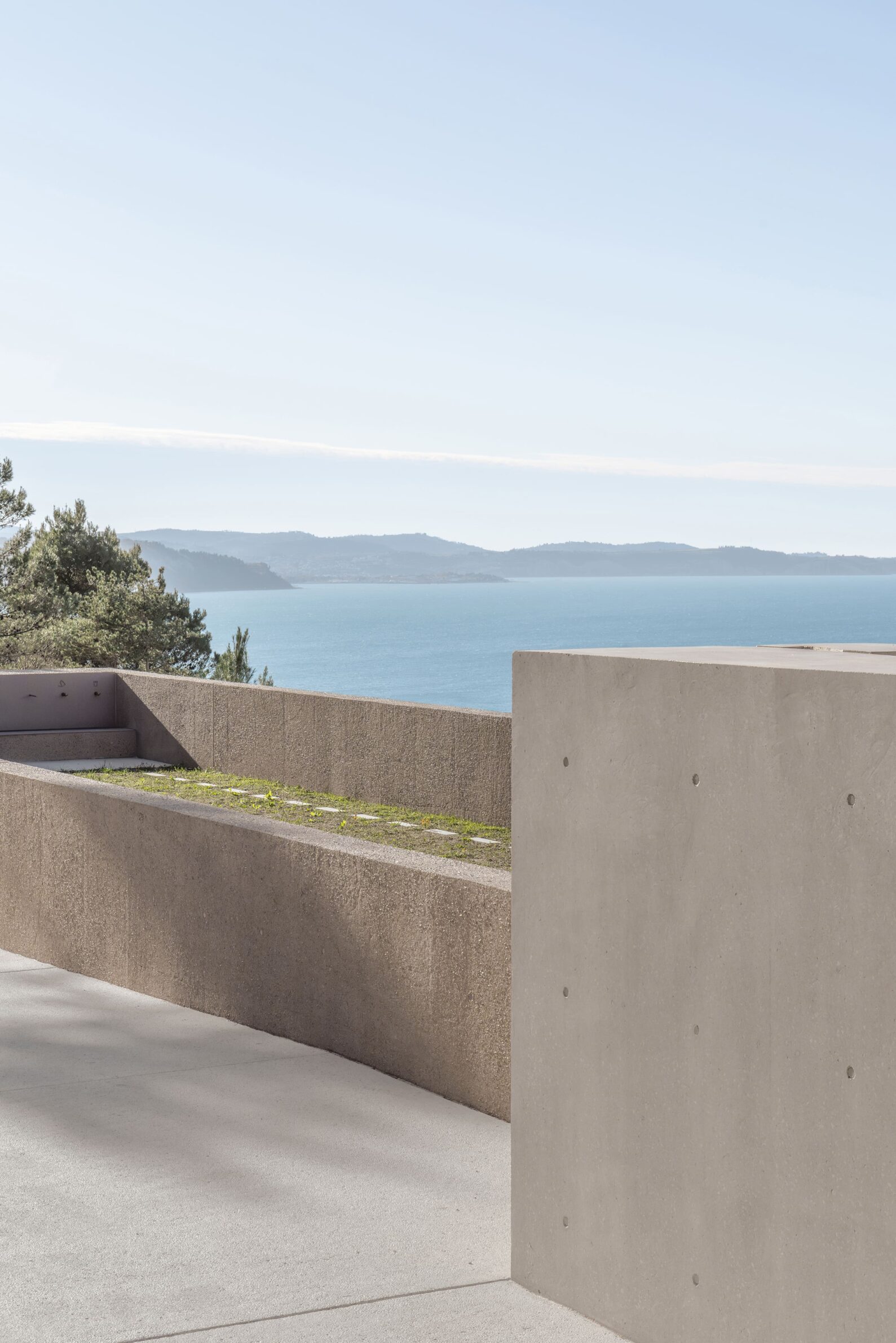
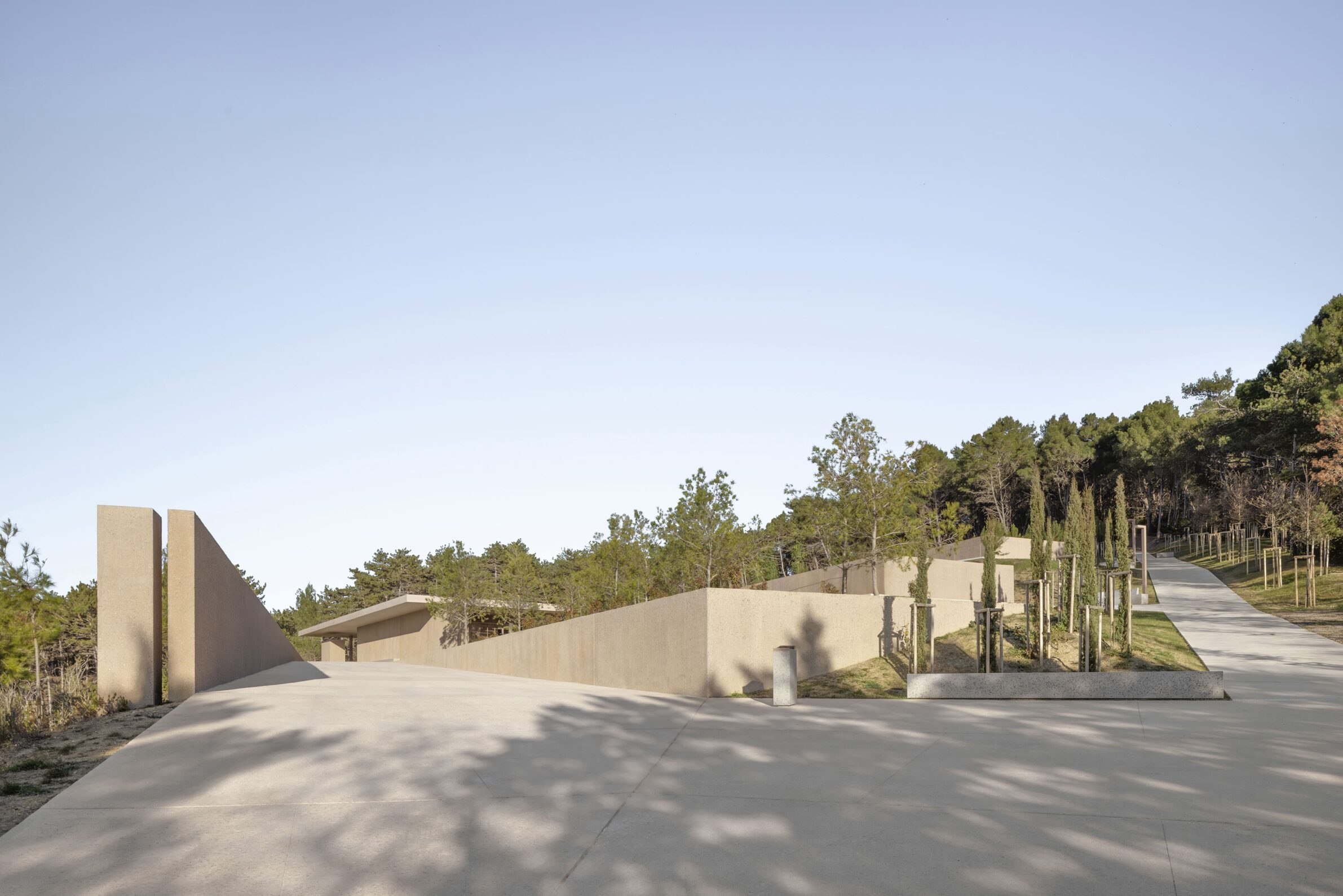
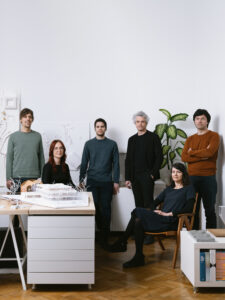
VOID Arhitektura Team
Founded in 2017 by academic colleagues Mina Hiršman, Uroš Rustja, and Primož Žitnik after winning a competition, void bridges the gap between architectural theory and practical application. our projects are a thoughtful response to specific needs and starting points, integrating with the physical and social environment while considering the past, present, and future. we challenge conventional approaches to infuse every project – no matter its scale or function – with a new, different perspective. we are committed to creating quality spaces that advance a more inclusive future for everyone.
Project
Ankaran Cemetery
Studio:
VOID Arhitektura
Architects:
Mina Hiršman,
Uroš Rustja,
Primož Žitnik,
Mateo Zonta
Landscape Architects:
Ana Kučan,
Luka Javornik,
Danies Mohorič
Year of Completion:
2024
Location:
Ankaran, Slovenia
Photography:
Ana Skobe
Edited by:
Tanja Završki


